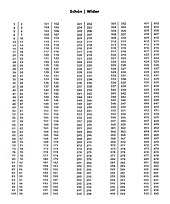Perfect printing

The double-sided printing of a printed sheet with printing forms that are usually different from one another is called perfecting .
Here, face printing is to be understood as the first print run , after which the printing material , usually paper , is turned and the second print run, the so-called reverse printing, takes place on the back of the face print with a different print motif than the first print run. The turning process is done either by turning it over or by turning over the sheet that has only been printed on one side. The term straight printing originated from the fact that in letterpress printing, due to the technically required shading, rastered images could only be printed well (beautifully) on the front of a printing sheet .
Up to the end of the 20th century, perfecting was done in two separate printing runs. After the entire print run was completed in straight printing, the printed sheets manually or semi-manually (were turning table or pile turner) turned over and again for the reverse printing in the printing press created . Later, with the help of turning devices that turned the printed sheet inside the machine in a printing machine with several printing units, double-sided printing could be carried out in a single print run. Such a perfecting press was called a Perfector because the sheet came out of the press “perfectly” after the first print run.
literature
- Helmut Hiller: Dictionary of the Book. 5th, completely revised edition. Klostermann, Frankfurt am Main 1991, ISBN 3-465-02511-3 .